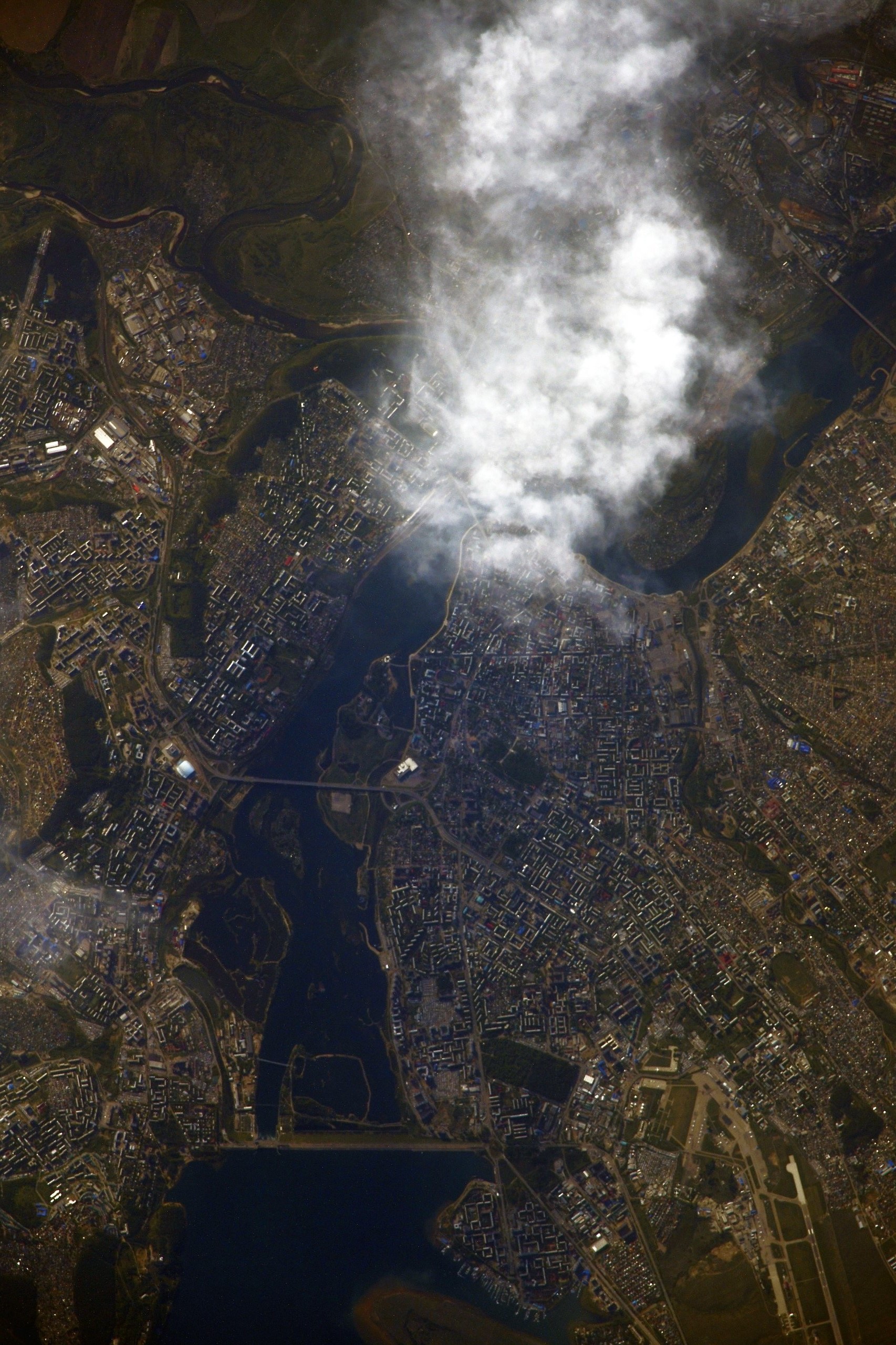[:ja]イワン・ワグナー宇宙飛行士がISSから撮影したロシアのイルクーツクです。

イルクーツク(Иркутск)は、ロシアのシベリア地方、イルクーツク州の州都で、約59万人の人口を擁しています。街はバイカル湖西岸内陸にあたり、首都モスクワからはシベリア鉄道で繋がっており、ロシア極東地域とウラル・中央アジアを繋ぐシベリア東部の工商および交通の要衝です。1880年代から1890年代にかけて金やその他金属の鉱床が発見されてから都市として急拡大しました。大陸性気候、ケッペンの気候区分では亜寒帯冬季少雨気候に属し、1月の月平均気温が-17.8℃と寒いですが極東のハバロフスク(-19.8度)等よりは高く、また近隣のバイカル湖東岸のウラン・ウデ(−23.3度)に比べるとはるかに温暖です。
地上の様子はこちらです。

参考文献: Ivan Vagner’s Tweet
地球俯瞰画像を見る: LiVEARTH
[Earthview Wonders] No.1047: Irkutsk🇷🇺
Astronaut Ivan Vagner captured from ISS Irkutsk, Russia.

Irkutsk (Иркутск) is the largest city and administrative center of Irkutsk Oblast, Russia. with over 600K population. The city proper lies on the Angara River, a tributary of the Yenisei, 72km below its outflow from Lake Baikal and on the bank opposite the suburb of Glaskovsk. The Trans-Siberian Railway connect Irkutsk to other regions in Russia and Mongolia, and when the railway reached Irkutsk, it had earned the nickname of “The Paris of Siberia.” Irkutsk originally had a borderline subarctic climate (Dwc). Since 2000, the temperatures have resembled a humid continental climate (Dwb). Snow cover has disappeared earlier, from late April in the 1930s to late March in the 1980s. Discontinuous permafrost depth had decreased from 200m to 100m from 1930s to 1980s.
The local scenery on the ground is as follows.

Reference: Ivan Vagner’s Tweet
See earthview photo gallery: LiVEARTH[:en][Earthview Wonders] No.1047: Irkutsk🇷🇺
Astronaut Ivan Vagner captured from ISS Irkutsk, Russia.

Irkutsk (Иркутск) is the largest city and administrative center of Irkutsk Oblast, Russia. with over 600K population. The city proper lies on the Angara River, a tributary of the Yenisei, 72km below its outflow from Lake Baikal and on the bank opposite the suburb of Glaskovsk. The Trans-Siberian Railway connect Irkutsk to other regions in Russia and Mongolia, and when the railway reached Irkutsk, it had earned the nickname of “The Paris of Siberia.” Irkutsk originally had a borderline subarctic climate (Dwc). Since 2000, the temperatures have resembled a humid continental climate (Dwb). Snow cover has disappeared earlier, from late April in the 1930s to late March in the 1980s. Discontinuous permafrost depth had decreased from 200m to 100m from 1930s to 1980s.
The local scenery on the ground is as follows.

Reference: Ivan Vagner’s Tweet
See earthview photo gallery: LiVEARTH[:]